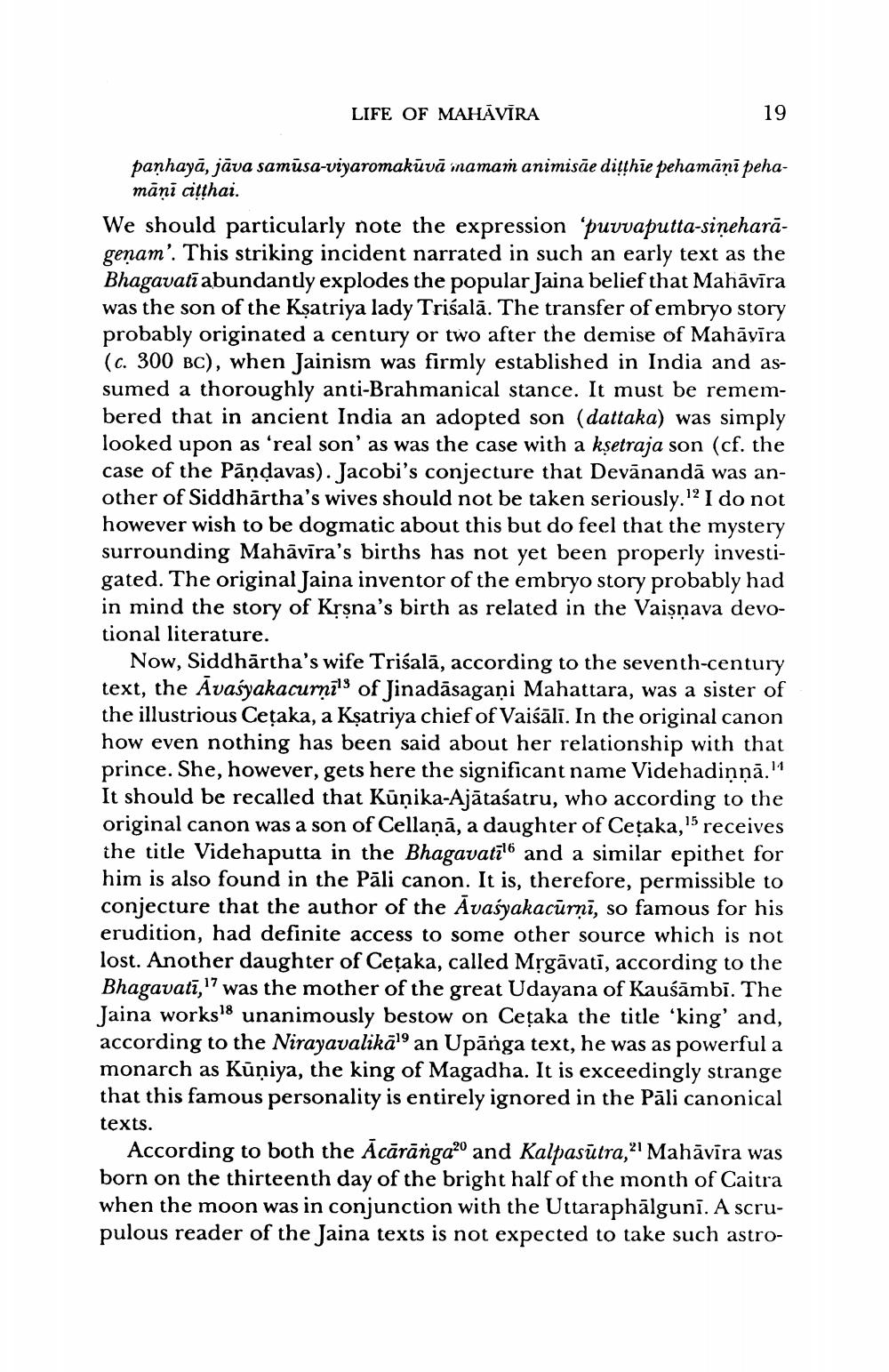________________
LIFE OF MAHĀVĪRA
19
panhayā, jāva samūsa-viyaromakuvā mamaṁ animisae diṭṭhie pehamānī pehamāņi citthai.
We should particularly note the expression 'puvvaputta-sineharăgenam'. This striking incident narrated in such an early text as the Bhagavati abundantly explodes the popular Jaina belief that Mahāvīra was the son of the Kṣatriya lady Triśalā. The transfer of embryo story probably originated a century or two after the demise of Mahāvīra (c. 300 BC), when Jainism was firmly established in India and assumed a thoroughly anti-Brahmanical stance. It must be remembered that in ancient India an adopted son (dattaka) was simply looked upon as 'real son' as was the case with a kṣetraja son (cf. the case of the Pandavas). Jacobi's conjecture that Devānandā was another of Siddhartha's wives should not be taken seriously.12 I do not however wish to be dogmatic about this but do feel that the mystery surrounding Mahāvīra's births has not yet been properly investigated. The original Jaina inventor of the embryo story probably had in mind the story of Kṛṣna's birth as related in the Vaiṣṇava devotional literature.
Now, Siddhartha's wife Trisala, according to the seventh-century text, the Avaśyakacurṇī1s of Jinadāsagaṇi Mahattara, was a sister of the illustrious Ceṭaka, a Kṣatriya chief of Vaiśālī. In the original canon how even nothing has been said about her relationship with that prince. She, however, gets here the significant name Videhadiņņā.11 It should be recalled that Kūņika-Ajātaśatru, who according to the original canon was a son of Cellaṇā, a daughter of Cetaka,15 receives the title Videhaputta in the Bhagavati1 and a similar epithet for him is also found in the Pali canon. It is, therefore, permissible to conjecture that the author of the Avaśyakacūrṇī, so famous for his erudition, had definite access to some other source which is not lost. Another daughter of Ceṭaka, called Mrgavati, according to the Bhagavati," was the mother of the great Udayana of Kausāmbi. The Jaina works18 unanimously bestow on Ceṭaka the title 'king' and, according to the Nirayavalika19 an Upanga text, he was as powerful a monarch as Kūniya, the king of Magadha. It is exceedingly strange that this famous personality is entirely ignored in the Pāli canonical
texts.
According to both the Acārānga2o and Kalpasūtra," Mahāvīra was born on the thirteenth day of the bright half of the month of Caitra when the moon was in conjunction with the Uttaraphalguni. A scrupulous reader of the Jaina texts is not expected to take such astro




